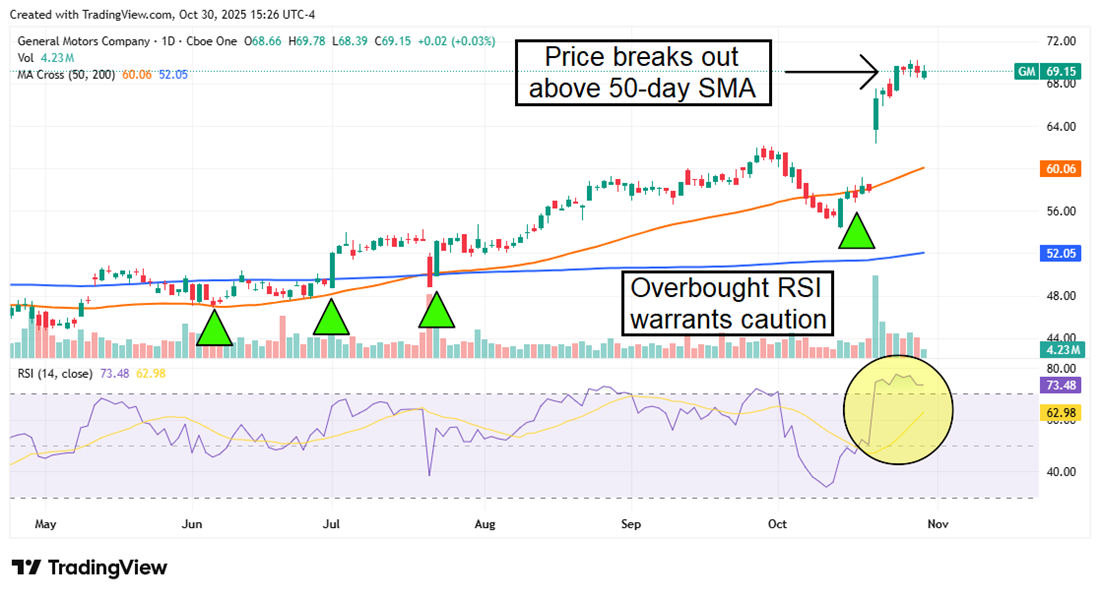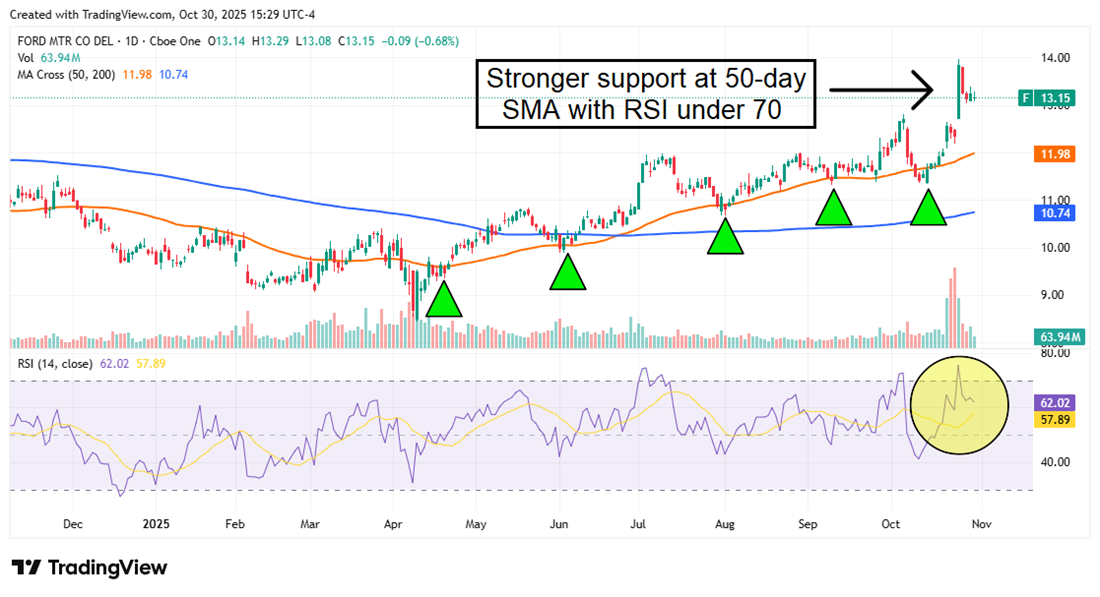Good day,
Thank you for subscribing to the Earnings360 newsletter, your daily source for quarterly earnings news and updates.
Each morning edition contains a wrap-up of today's pre-market earnings announcements and yesterday's earnings announcements after the closing bell.
Before we send you your first edition, please take a moment to confirm your subscription below. We will not be able to send your newsletter until you confirm your subscription.
Confirm Your Subscription Here
The Earnings360 Team
Sunday's Featured Content Ford and GM Stocks Jump—Is the Auto Rebound Real?Written by Dan Schmidt. Published 11/3/2025. 
Key Points - U.S. automakers are rebounding after a turbulent start to 2025, driven by strong Q3 earnings from Ford and GM.
- GM raised its full-year guidance and showed resilience against tariffs, while Ford lowered its EBIT outlook due to operational challenges and EV-related losses.
- Despite improving fundamentals, elevated interest rates and weak consumer sentiment may continue to pressure auto sales heading into Q4.
For U.S. automakers, 2025 has been a year of repeated whipsaws amid multiple adversities. A confluence of factors has left consumers wary of large purchases, and many are holding on to their cars for longer. Still, Q3 earnings from two of the most significant legacy American manufacturers have injected fresh optimism about the sector's outlook. Can U.S. automakers build on this rebound, or is it a brief bright spot in an industry still facing strong headwinds? Headwinds Plagued Car Manufacturers in First Half of 2025 The world's wealthiest individuals are making huge moves with their money.
Warren Buffett just liquidated billions of shares. Bill Gates sold 500,000 shares of Microsoft. Jeff Bezos filed to sell Amazon shares worth $4.8 billion.
What is going on? One multi-millionaire believes they are preparing for a catastrophic event. But not a crash, bank run, or recession. It's something we haven't see in America for more than a century. For the full story, click here. The auto industry spent the early part of 2025 in the crosshairs of regulators and consumers alike. Uncertainty peaked when Ford Motor Co. (NYSE: F) suspended full-year 2025 guidance during its Q1 2025 earnings release. Some of the biggest factors negatively affecting car manufacturers included: - Tariffs — The most consequential issue was the Trump administration's tariffs on cars and parts made outside the United States. Legacy automakers like Ford and General Motors Co. (NYSE: GM) have intricate supply chains throughout North America, and tariffs on imported parts from Canada and Mexico posed a large threat to margins. (Ford estimated its tariff burden at more than $2.5 billion gross during its Q1 2025 earnings release.)
- High rates — Interest rates remain elevated, and the average rate on a five-year new-car loan is still above 7.5%. That rate is roughly 100 basis points lower than a year ago but still about double the average seen in 2022.
- Weak consumer sentiment — Consumer sentiment hit multi-year lows in spring 2025, with many citing tariffs and high interest rates as reasons to delay spending. Sentiment has improved somewhat since early 2025, but consumers remain largely pessimistic about the economy as the year closes.
The end of the federal electric vehicle tax credit and shortages of various precious metals have also weighed on the industry, and the average price of a new vehicle exceeded $50,000 for the first time in September. Despite these headwinds, Q3 earnings from both GM and Ford surpassed analyst expectations; a return to sales growth and relatively modest valuations have put these stocks back on investors' radar. GM and Ford Posted Solid Q3 Beats but Offered Varied Guidance Both GM and Ford reported strong Q3 results, but the companies painted somewhat different pictures for the road ahead during their conference calls. GM's Optimistic Guidance Raise GM released Q3 2025 results on Oct. 21, and it's easy to see why the stock rallied double digits afterward. Despite a slight year-over-year sales decline, the company exceeded expectations for both earnings per share (EPS) and revenue, and raised full-year earnings guidance to $9.75–$10.50 per share. Executives said tariff-mitigation strategies and other offsets should lower the company's tariff burden in 2026 versus 2025, even though Q1 2025 experienced much lower tariff rates. That improved outlook underscores growing investor confidence in GM's operational and strategic trajectory. Ford's Cautious Approach Ford also beat EPS and revenue expectations during its Q3 2025 earnings presentation on Oct. 23, but executives delivered a more cautious outlook than their counterparts at GM. Tariff mitigation was a bright spot, and the company now expects its tariff burden to be about $1 billion — roughly half of earlier estimates. However, Ford faces additional challenges: the company expects a free-cash-flow hit of up to $3 billion from the Novelis aluminum plant fire, and its first-generation EV program is now on pace to lose about $3.6 billion in 2025. Those headwinds prompted management to lower earnings-before-interest-and-taxes guidance to $6–$6.5 billion, down from $8 billion. Both companies have dialed back emphasis on EVs now that the federal tax credit has expired, pivoting instead to hybrid models and established trucks and SUVs. Still, improved earnings don't mean the industry is out of the woods. SP Global analysis predicts a moderate slowdown in car buying in Q4, noting that the EV tax-credit expiration boosted Q3 sales while high prices and rates will continue to weigh on buyers. Charts Show Bullish Long-Term Price Action With Potential Short-Term Volatility On the charts, both GM and Ford show strong long-term upward momentum, but the post-earnings rallies may have pushed shares into short-term overextension. GM gained nearly 15% after its earnings release, pushing the stock to a new all-time high. The Relative Strength Index (RSI) has traded above 70 for the longest stretch in over a year, suggesting a short-term pullback could be next. 
Ford shows similar long-term strength, with solid support at the 50-day simple moving average (SMA) and a breakout following Q3 earnings. Unlike GM, Ford did not receive the same magnitude of post-earnings upside, and its RSI no longer reads as overbought — so a pullback to support would not be surprising. 
From a valuation standpoint, Ford is cheaper, pays a larger dividend, and its chart shows more short-term upside potential. GM, however, may be the stronger long-term play given fewer near-term financial headwinds and brighter 2026 projections.
|